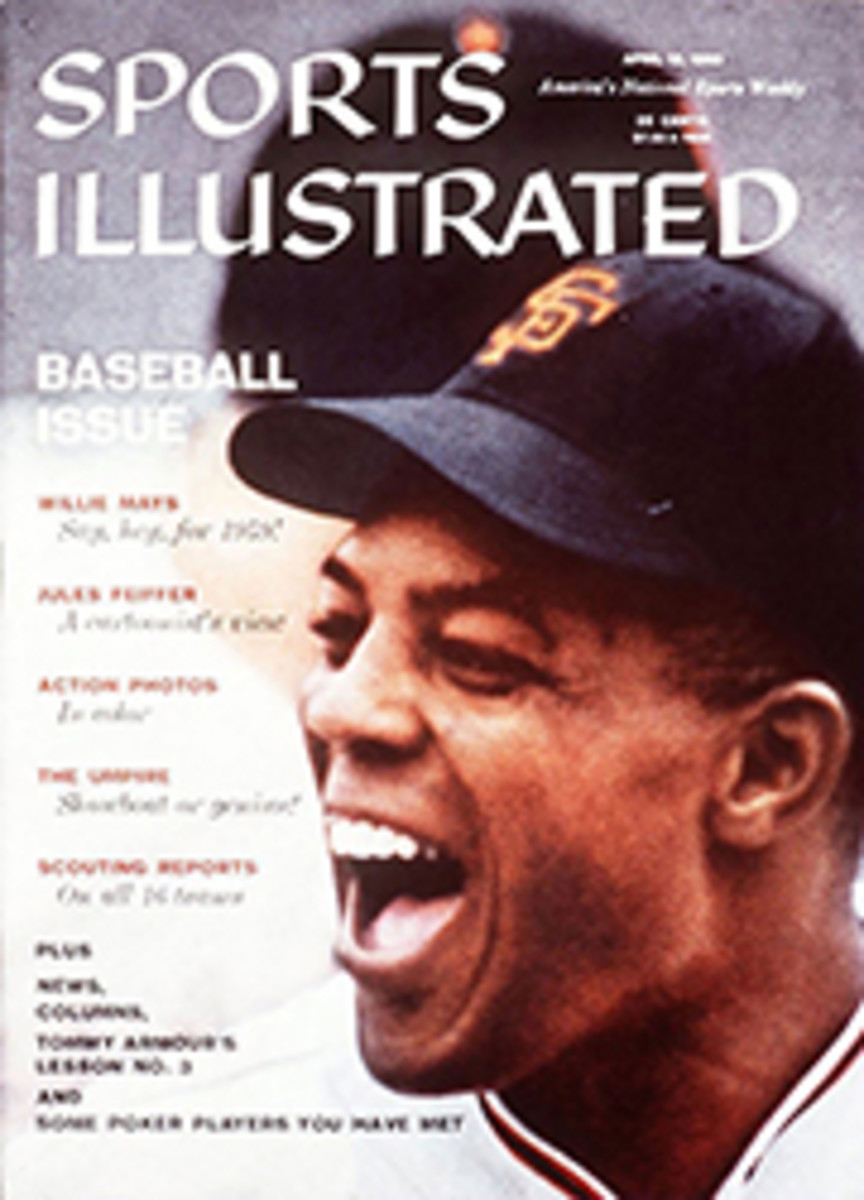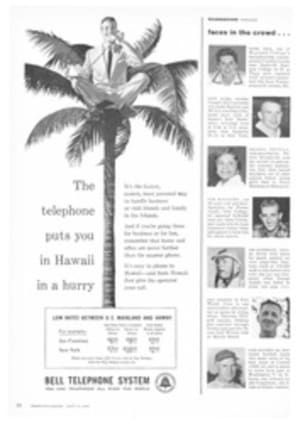
The fastest race in the world
The big, violent Offenhauser-powered Indianapolis cars came south to the Daytona International Speedway last week and, in a program sadly marred by the death of one of racing's best drivers, the world's fastest race was run on the imposing new track west of town.
George Amick, 34, the chubby little scrapper who finished second in the Indianapolis "500" last year and who earlier in the week snapped around the banked track to a one-lap American course record of 176.887 mph, was killed Saturday on the last lap of a 100-mile race for the big speedway cars. Amick, a bold driver bidding for a third-place finish, apparently attempted to turn down and gain speed as he shot out of the west bank. He lost control of his new Bowes Seal Fast Special, drifted into the guardrail and somersaulted pell-mell down into the infield. It was a vicious accident; both front wheels and their axle were torn from the car. Amick was dead on arrival at the track hospital. The precise cause of Amick's trouble is unknown. It is likely he either fouled in the turbulent air wake of Driver Bob Christie's roadster, which was some 50 feet ahead, was sideswiped by the troublesome cross wind, or, to put it in race terms, simply "lost it."
The accident came only seconds after Jim Rathmann, a slender 30-year-old Miamian, famous for his grit and savvy, fled under the winner's flag for the first time that day, setting a new world competitive race record of 170.261 mph. Rathmann himself had established the old record, with his blistering 166.722 last summer on the high banks of Monza. Running beside his brother Dick as the field exploded past the yellow starting line, Rathmann tromped on the gas of his blue- and red-spotted Simoniz Special and seized the lead as they bent into the first turn. Rathmann, probably the driver most familiar with the track because of several practice runs he had made there in February, found his groove early and he drove it with urgent pressure. He was challenged only by a white Leader Card Special, driven by Rodger Ward, who was to survive a harrowing spin in the day's second race. For five laps Ward held the lead, but he couldn't escape, and on the 12th lap yielded, finally and for good, to the redoubtable Rathmann. Practically speaking, the race was over; Rathmann racked up 28 more lap purses on his way to a total of $10,350 for the day's work.
The second race, scheduled as a 100-mile event, with no limit set on engine sizes, was cropped to 50 miles, due to unexpected driver fatigue and time spent in cleaning up after the wreck. Here again brave Jim Rathmann jumped into the lead at the outset, and Ward, who started in the second row, was again to make a battle of it. He overtook his rival on the second lap and was hell-bent to get away when, suddenly, on the west turn, he spun out and floated lazily about a thousand feet to the exit of the chute—the spot where Amick began his sickening tumble. Rathmann, riding his tail, streaked past unperturbed, but Bob Christie was quickly forced to brake and nimbly guide himself past Ward's car. At that moment Christie lost his place to Dick Rathmann, and the brothers Rathmann ran one-two to the finish line.
Scarcely noticed in all the excitement was the expert driving of young Jim Packard, a slender and grinning former midget racer. In a dirt track car, Packard finished ninth in the first race and fifth in the second. Also scarcely noticed was a slightly unusual entry. This was a Wolcott Special, featuring a positive displacement-type supercharger being perfected by Mechanic Herb Porter, which inhaled too much grime and came muttering into the pits after six laps of the first race.
On the following day, the tight whine of 27 sports cars traced around the big 2½-mile track and dropped down through the 1.3-mile infield loop in a six-hour international professional race for slices of a $20,000 pie. When most of the big cars buckled under the torture, a pair of quick, silver Porsches purred in for first and second places. The winning co-drivers, Count Antonio Von Dory and Roberto Mieres, averaged 93.345 mph. Runners-up Art Bunker and Bob Said followed slightly more than a lap behind.
The track appears to be a true one, though unlearned and frightfully fast. Two drivers have been killed in its first nine weeks of operation; others have walked away from heart-stopping skids and wrecks. In practice last week three spectacular mishaps occurred. Bob Veith, coming off that west turn, struck the rail, slipped and skidded top-down for some 300 yards. He escaped with a banged shoulder and a chewed-up helmet. The cause: a mechanic had left a starter shaft in the nose of the car, upsetting the steering. Al Keller, roaring at 180 mph into the grandstand dogleg, hit what seems to have been a phantom bump and made four complete turns as he skidded 1,250 feet, the longest slide of the week. No injury. Then Jerry Unser hit the apron below the east turn, went up to smash twice into the guardrail, and got out with a sprained back.
After its second major race program the speedway has begun to show its own deceptively complex personality. "It's hard to realize your enormous speed and it's exhausting," says the 1956 "500" winner, Pat Flaherty. "Its winds are the trickiest, and it must be driven with great caution," says Veteran Tony Bettenhausen. Rodger Ward feels it might be attacked with cars of a longer wheel base. Old Pro Johnny Thomson will drive it as long as a purse is up. Jim Rathmann is convinced it's a great track. But all of them would agree with a comment George Amick made before the race.
"If you lose it here," he said soberly, "your rump is a grape."
PHOTO
IN LIGHTNING COMPANY ON THE STEEP EAST TURN OF THE DAYTONA SPEEDWAY, LITTLE GEORGE AMICK (NO. 2) DRIVES SMOOTHLY AND SERENELY, WITHOUT FOREWARNING OF THE VIOLENCE SOON TO COME
PHOTO
HANGING FROM THE CAR AS IT ROLLS, AMICK HURTLES TO HIS DEATH

